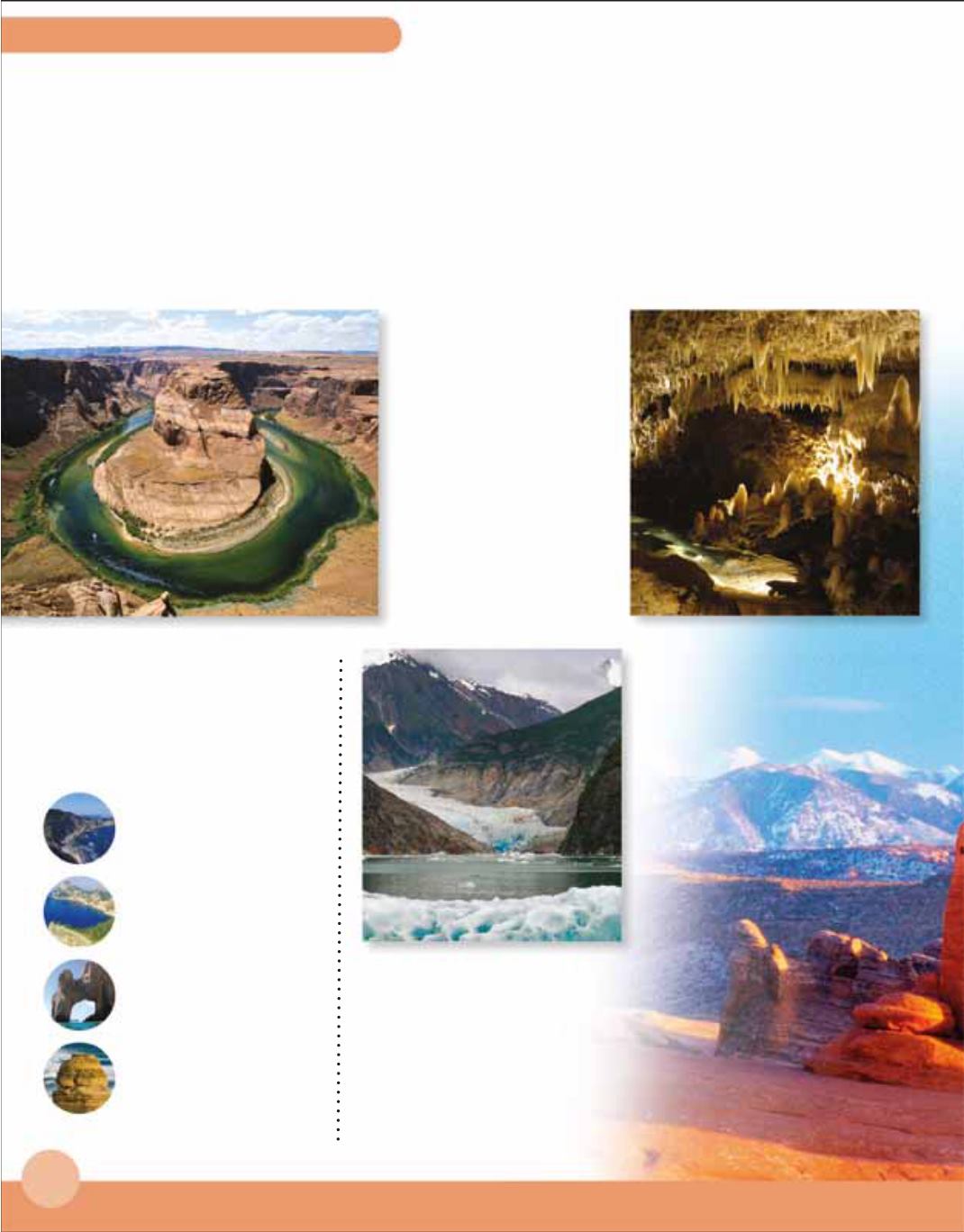
252
The surface of our planet never stops changing. Over
millions of years, land is slowly worn away by wind,
rain, and rivers. Floods, volcanoes, and earthquakes
can change the shape of the land in just a few hours.
Shaping the land
River power
The Grand Canyon
formed over millions of
years as the Colorado
River slowly wore ever
deeper into the rock.
What is the most active volcano on Earth?
Planet Earth
Glaciers at work
Glaciers are huge rivers of ice
that flow slowly off snowcapped
mountains. Broken rock sticks to
the bottom of the glacier, which
then wears away the land like
sandpaper, carving out a deep,
U-shaped valley.
Going underground
Caves form when rain
seeps underground and
eats away at soft rock
such as limestone.
Headlands
are areas of
harder rock that have not
been worn away.
Sea arches
form when
waves open up cracks
in headlands.
Sea stacks
are pillars of
rock left in the sea after
an arch collapses.
Bays
form where waves
wear into areas of softer
rock along the coast.
Coastal shapes
Powerful waves shape
the coastlines around
the world’s oceans.


